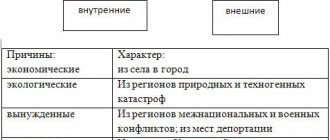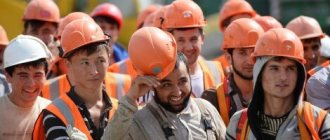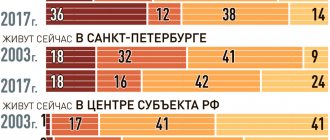Emigration from Russia – where does it all begin?
- Choosing a country and planning Those who decide to move abroad first play out the likely relocation scenario in their heads. After all, we need to find answers to a variety of questions: where and what will I live there, are my professional skills and knowledge suitable for working in new conditions, how quickly can I adapt to new living conditions, how comfortable will my family be there? The answers to these and dozens of other questions should be considered very carefully, because his moral and material well-being will depend on how prepared the future migrant is for new living conditions.
- A tourist trip with elements of real life You should not try to emigrate from Russia to a country that you have only seen on TV. It’s better to get a tourist visa and go see everything in reality. And of course, don’t live in a hotel, but rent regular housing. Go to stores, ride public transport, communicate with local residents, inquire about the cost of utilities in order to understand how real living conditions correspond to your ideas about your future place of residence, and whether you should decide to move to this country for permanent residence.
- Language preparation If you intend to leave for permanent residence in another country, you should take care of learning the language in advance. It is best to spend time and money on language courses before moving, so that you know the language not at the level of standard phrases, but in more depth. This will help you communicate with future neighbors and colleagues. And when obtaining resident status, you may have to undergo testing to determine your level of language proficiency and knowledge of the history and customs of the country.
- Studying the employment market When choosing a country to emigrate from Russia, it is worth carefully studying the vacancies of the area in which you are going to live. It is important to find out about working conditions, wages, and insurance benefits. Ask if it is possible for a foreign citizen to get an internship, followed by an invitation to work. Don't forget about self-promotion. A correctly written resume, which clearly and attractively describes professional and personal qualities, will increase the chances of finding a decent job.
- Studying immigration laws Many countries that are welcoming to tourists are not ready for them to settle in the country as permanent residents. Therefore, it is important to study the laws governing the process of issuing residence permits, permanent residence and citizenship, as well as the availability of special programs that make it easier to change countries. The receiving party must be sure that your move for permanent residence will not become a burden on the budget, since it primarily cares about its citizens. Therefore, it is important to prove that you will not become a freeloader, but, on the contrary, have strong intentions to contribute to the local economy. It is possible that the immigration legislation of the selected country is loyal to the acquisition of real estate or investment in government securities. A positive aspect when deciding to issue a permanent residence permit will also be a business plan that involves opening a company with the provision of jobs to the local population.
You can read more about what you need to consider when moving from Russia abroad in our article “6 main issues that need to be resolved before moving for permanent residence in Europe.”
| Migration in Russia, results of the first half of 2021 | Leads the column |
| Ekaterina SHCHERBAKOVA |
In January-June 2021, for the first time in many years, Moscow lost part of its population due to migration exchange with other territories
Despite the fact that the population of Russia has been steadily increasing due to migration growth for more than 40 years, in the regions of Russia, migration exchange with other territories has a multidirectional impact on population changes.
Some federal districts have been characterized by migration population growth for many years, while others have been characterized by migration population decline. The highest values of the migration growth rate were almost invariably observed in the Central Federal District, and the lowest in the Far Eastern Federal District. The exceptions were 2011-2012, when the most intense population decline as a result of migration was observed in the North Caucasus Federal District, as well as 2013 and 2021, when the most intense migration growth was observed in the Northwestern Federal District. In addition, in 2014-2018, the highest values of the migration growth rate were observed in Crimea (Crimean Federal District in 2014-2016).
In the first half of 2021, the intensity of migration movements decreased in all federal districts, especially significantly in the Central and North Caucasus Federal District. Due to the prevailing migration outflow, the population of the Siberian and Far Eastern Federal Districts decreased, and if in the latter the intensity of migration decline decreased compared to the first half of 2021 (-0.2‰ versus -0.7‰), then in the Siberian Federal District it intensified and became the most intense (-0.7‰ versus 0 for January-June 2021). The population of the remaining federal districts increased due to the prevailing migration influx, but. The Central Federal District has clearly lost its leading position (0.3‰), losing not only to the Southern Federal District (3.1‰), but also to the Northwestern (1.8‰) and Ural (1.5‰) federal districts ( Table 1).
The main part of migration movements is associated with a change of place of residence within Russia. In migration exchange with other districts, leadership in migration attractiveness passed in the first half of 2021 from the Central Federal District to the Northwestern Federal District. For the first time, the Central Federal District lost part of its population in migration movements within Russia (-0.2‰), while the Northwestern Federal District replenished it (1.4‰). The Southern (1.0‰) and Ural (0.3‰) federal districts also received a slight increase in population in migration exchange with other districts. In the North Caucasus Federal District, there is a zero migration balance in intra-Russian migration. The remaining federal districts have lost part of their population in migration exchanges with other federal districts. The most intense migration decline was observed in the Siberian (-1.1‰) and Far Eastern (-1.0‰) federal districts.
Due to migration exchange with other countries of the world, primarily with the CIS countries, all federal districts are increasing their population to one degree or another. As for migration exchange with CIS countries, the intensity of migration growth in the first half of 2021 was highest in the Southern (2.0‰), and lowest in the North Caucasus and Volga Federal Districts (0.2‰ each). Population growth due to migration exchange with non-CIS countries is generally insignificant, while a negative migration balance has developed in the Northwestern and Far Eastern Federal Districts.
The leaders in migration turnover in January-June 2021 were two federal districts - the Far Eastern and Northwestern - in which the number of arrivals and departures per 1000 people was, respectively, 64 and 60 in annual terms. The indicator value is noticeably lower in the Ural (52) and Siberian (49) federal districts. In other federal districts, the migration turnover of the population is below the Russian average (46 migrants per 1000 people). Its value is lowest in the North Caucasus Federal District (29).
Migration turnover in exchange with CIS countries in January-June 2020 turned out to be higher than the Russian average (6.1 per 1000 people in annual terms) in the Far Eastern Federal District (8.8), slightly lower in the Ural Federal District (7 ,2), Central (7.1), Southern (6.7), Siberian (6.5) and Northwestern (6.3) federal districts. In the North Caucasus Federal District its value ranged from 2.6 per 1000 people, in the Volga Federal District - 4.0.
| RF | Central Federal District | Northwestern Federal District | Southern Federal District | North Caucasian Federal District | Volga Federal District | Ural Federal District | Siberian Federal District | Far Eastern Federal District | |
| Migration - total | |||||||||
| Arrived | 23,5 | 22,0 | 31,1 | 22,9 | 14,8 | 21,3 | 26,5 | 23,9 | 32,1 |
| Retired | 22,9 | 21,7 | 29,3 | 19,8 | 14,6 | 21,2 | 25,0 | 24,6 | 32,3 |
| Migration increase | 0,6 | 0,3 | 1,8 | 3,1 | 0,2 | 0,1 | 1,5 | -0,7 | -0,2 |
| Within Russia | |||||||||
| Arrived | 19,8 | 17,9 | 27,4 | 18,1 | 13,0 | 18,9 | 22,0 | 20,2 | 26,5 |
| Retired | 19,8 | 18,1 | 26,0 | 17,1 | 13,0 | 19,1 | 21,7 | 21,3 | 27,5 |
| Migration increase | 0,0 | -0,2 | 1,4 | 1,0 | 0,0 | -0,2 | 0,3 | -1,1 | -1,0 |
| With CIS countries | |||||||||
| Arrived | 3,4 | 3,8 | 3,4 | 4,4 | 1,4 | 2,1 | 4,2 | 3,4 | 5,0 |
| Retired | 2,7 | 3,3 | 2,9 | 2,3 | 1,2 | 1,9 | 3,0 | 3,1 | 3,8 |
| Migration increase | 0,7 | 0,5 | 0,6 | 2,0 | 0,2 | 0,2 | 1,2 | 0,3 | 1,1 |
| With foreign countries | |||||||||
| Arrived | 0,3 | 0,4 | 0,3 | 0,4 | 0,4 | 0,3 | 0,3 | 0,2 | 0,5 |
| Retired | 0,3 | 0,4 | 0,4 | 0,3 | 0,4 | 0,2 | 0,2 | 0,2 | 0,9 |
| Migration increase | 0,0 | 0,0 | -0,1 | 0,1 | 0,0 | 0,1 | 0,1 | 0,0 | -0,4 |
* Central (Central Federal District), Northwestern (Northwestern Federal District), Southern (Southern Federal District), North Caucasian (North Caucasus Federal District), Volga (Volga Federal District), Ural (Ural Federal District), Siberian (Siberian Federal District), Far Eastern (FEFD)
Among the regions-subjects of the Russian Federation, a particularly high migration turnover (total, taking into account internal and external migration) in January-June 2021 was noted, as more than once in the past, in the Chukotka Autonomous Okrug (182 arrivals and departures per 1000 permanent population) . The Magadan Region, the Altai Republic (91 each), the Yamalo-Nenets Autonomous Okrug (90), the Republic of Sakha (Yakutia), the Nenets Autonomous Okrug, and the Leningrad Region (82-84 per 1000 people) are also characterized by a high migration turnover of the population.
In other regions, the value of migration turnover did not reach 80 arrivals and departures per 1000 permanent population, and it was the lowest, as last year, in the Chechen Republic (17). Migration turnover is also low in other republics of the North Caucasus: Dagestan, Kabardino-Balkaria, Ingushetia, North Ossetia-Alania (21-23). In half of the regions, migration turnover exceeded 49 arrivals and departures per 1,000 permanent population; in the central half of the regions (excluding the 25% of regions with the highest and 25% with the lowest values of the indicator), its value ranged from 41 to 62 per 1,000 people (Fig. 14).
The intensity of entry into the territory was higher than the Russian average - 24 per 1000 people for January-June 2021, annualized - in 49 regions-subjects of the federation. The highest intensity of entry was registered in the same Chukotka Autonomous Okrug (86 arrivals per 1000 people), almost half as much in the Leningrad region, the Altai and Sakha (Yakutia) republics, the Nenets and Yamalo-Nenets Autonomous Okrug of the Magadan region (44-49 arrivals per 1000 Human). The lowest intensity of arrivals was observed in the republics of Chechnya (8), North Ossetia - Alania, Dagestan, Kabardino-Balkaria, Ingushetia and Moscow (10-13), in other regions - 15 or more arrivals per 1000 people.
The rate of departure in 50 of the 85 regions-subjects of the federation was higher than the Russian average - 23 per 1000 people for January-June 2021, annualized. The Chukotka Autonomous Okrug traditionally has the highest relative number of departures (96). The intensity of migration outflow from the Magadan and Murmansk regions, the Yamalo-Nenets Autonomous Okrug, and the Altai Republic is noticeably lower (from 40 to 47 departures per 1000 people).
The lowest intensity of departures in January-June 2021 was observed in Chechnya, Ingushetia (9 per 1000 people), Kabardino-Balkaria, Dagestan, North Ossetia-Alania and Moscow (11-15). In other regions, it ranged from 17 departures per 1000 people and higher.
Figure 14. Migration turnover by regions of the Russian Federation, according to data for January-June 2021, annualized, number of arrivals and departures per 1000 permanent population
List of regions
In terms of the absolute number of arrivals to their place of permanent residence (long-term stay), as in previous years, the undisputed leader, despite the reduction in territory and population as a result of the expansion of the administrative borders of Moscow[17], remains the Moscow region, which in January-June 2021 Almost 120 thousand people moved in. This is 28% less than in the same period of the previous 2019. The Moscow region is also followed by a noticeable margin by Moscow (79.3 thousand people), which has repeatedly become the leader in attracting migrants, St. Petersburg (71.6), Krasnodar Territory (65.5), the Republic of Bashkortostan (54.9), Sverdlovsk, Leningrad and Rostov regions, Krasnoyarsk Territory (45-46 thousand people each). In other regions-subjects of the federation, the number of arrivals registered in January-June 2021 did not reach 39 thousand people.
In terms of the number of registered departures, the Moscow region also took first place (more than 109 thousand people in January-June 2020). It is followed almost in the same order by Moscow (94.1), St. Petersburg (76.7), the Republic of Bashkortostan (55.7), Krasnodar (54.8) and Krasnoyarsk (48.2) territories, as well as Sverdlovsk area (43.9). In other regions, the number of registered departures was less than 40 thousand people.
As a result of migration exchange with other territories - regions of Russia and foreign countries - in the first half of 2020, the population of 47 out of 85 regions-subjects of the federation increased (Fig. 15). In terms of the intensity of migration growth, the Leningrad region has repeatedly occupied first place (15 per 1000 permanent population in annual terms). This is followed by the Republic of Sakha (Yakutia) (12‰), the Nenets Autonomous Okrug, the Kaliningrad Region and the federal city of Sevastopol, which held the lead in this indicator in 2015-2017 (about 9‰). In the remaining 42 regions with positive migration growth, its value did not reach 7‰.
In 38 regions-subjects of the federation, according to data for January-June 2020, a migration decline in population was registered. It was most intense in the Chukotka Autonomous Okrug (-11‰). In the Tomsk region, the intensity of migration loss was -6‰, in the Khabarovsk Territory and Omsk region – about 4‰.
In absolute terms, the largest population growth due to migration in the first half of 2021 was received by the Leningrad region (14.2 thousand people), Krasnodar region (10.8), Moscow region (10.5), and the remaining regions - less than 7 thousand each Human.
The most significant migration decline in population in absolute terms for January-June 2021 was recorded in Moscow (-14.8 thousand people), which previously invariably had a significant migration increase. The migration population decline has already been noted in St. Petersburg earlier; for January-June 2021 it amounted to -5.1 thousand people. In the Omsk and Tomsk regions, Khabarovsk Territory, the migration loss amounted to about 3 thousand people, and in other regions – up to 2 thousand people.
Figure 15. Migration population growth in the regions of the Russian Federation, thousands of people for January-June 2021 and per 1000 permanent population according to data for January-June 2021, annualized
List of regions
Most regions - subjects of the Russian Federation replenish their population due to migration exchange with countries - former republics of the USSR (mainly CIS countries), but many of them “lose” population in migration exchange with other regions of Russia, and some in migration exchange with countries of the “far” abroad.
In 2021, due to the pandemic, migration volumes decreased significantly, and its directions also changed - part of the population left the previously most attractive regions, primarily Moscow and St. Petersburg.
Unlike previous years, the number of regions increasing their population due to migration exchange with CIS countries has decreased. In the first half of 2021, it dropped to 53 compared to 78 for the same period in 2021. The number of regions-subjects of the federation that increase their population due to migration exchange with other countries of the world has also decreased - to 49 versus 70, and the number of regions attracting Russian migrants, on the contrary, has increased slightly - to 37 versus 22 in January-June 2019.
The intensity of migration growth due to exchange with the CIS countries in January-June 2021 was highest in the Republic of Sakha (Yakutia) - 11.9 per 1000 permanent population in annual terms (Fig. 16). It was also quite high in the Chukotka Autonomous Okrug, Kamchatka Territory, the federal city of Sevastopol, the Kursk Region and the Khanty-Mansiysk Autonomous Okrug - Ugra (4-5‰). In other regions, the coefficient of migration growth in exchange with CIS countries was less than 4‰.
A negative balance of migration in exchange with CIS countries has developed in 31 regions, but the intensity of migration loss is, as a rule, low. It was most intense in the Smolensk region (-2.5‰). In the Republic of Mordovia, the Jewish Autonomous Region, the Sakhalin, Amur, Omsk regions and the Primorsky Territory, the intensity of migration loss in exchange with the CIS countries exceeded 1‰, in the Astrakhan and Ryazan regions, the Republic of Khakassia and Moscow it was -0.7‰.
Population growth due to migration exchange with other countries of the world (not included in the CIS) is insignificant - the highest value of the migration growth rate was noted in the Penza region (0.4‰), somewhat lower - in the Republic of Sakha (Yakutia), the Chuvash Republic, Irkutsk and Rostov areas (0.3‰). In other regions, migration growth due to population exchange with non-CIS countries did not reach 0.2‰, and in most was close to zero. Migration loss in exchange with countries outside the CIS was recorded in 36 regions, while it was somewhat significant in the Amur (-1.0‰) and Kursk (-0.8‰) regions, the republics of Mari El and Buryatia , Khabarovsk Territory, Sakhalin Region (0.5-0.7‰).
The most intense migration population growth due to exchange with other Russian regions in January-June 2021 was registered, as in the same period of 2021, in the Leningrad region (13.4‰). In other regions it is at least twice as low. In the Republic of Tyva it was 7.0‰, in the Kaliningrad region 6.8‰, the Nenets Autonomous Okrug - 6.2‰, and in other regions - 4.5‰ and less.
47 regions lost part of their population in migration exchanges with other regions of Russia. The most intense migration loss in exchange with other Russian regions was registered, as more than once in the past, in the Chukotka Autonomous Okrug (-16‰). In the Tomsk region, Khabarovsk Territory, the republics of Komi and North Ossetia-Alania, Murmansk, Omsk Magadan regions, the migration loss in exchange with other Russian regions ranged from 3 to 5‰ per year, and in other regions the intensity of the migration loss did not reach 2‰ .
The median value of the coefficient of migration growth in exchange between Russian regions was -0.1‰, in the central half of the regions (excluding 25% of regions with the highest and lowest values) its value varied from -0.9‰ to 1.0‰, then there was close to zero growth.
In absolute terms, the largest population increase due to migration exchange with other territories of Russia in January-June 2020 was received by the Leningrad region (12.6 thousand people). It is followed by a wide margin by the Moscow region (5.9) and the Krasnodar region (5.2 thousand people). In other regions-subjects of the federation, the migration increase in exchange with other Russian regions did not reach 3.5 thousand people.
The most significant decline in migration exchange with other Russian territories was noted in Moscow (-9.8 thousand people) and St. Petersburg (-4.9). In the Tomsk and Omsk regions, Khabarovsk and Krasnoyarsk territories, it ranged from 2.4 to 2.9 thousand people.
Figure 16. Migration growth in the population of the regions of the Russian Federation by individual migration flows, according to data for January-June 2021, annualized, per 1000 permanent population
List of regions
As in Russia as a whole, “internal” migration flows predominate in all regions-subjects of the federation (Fig. 17).
The intensity of immigration from outside the country in January-June 2020 was highest in the Republic of Sakha (Yakutia) - 15 arrivals per 1,000 permanent population. It was also high in the Kaluga region, Chukotka Autonomous Okrug, Kamchatka Territory (11-13‰), in other regions it did not reach 10‰.
The lowest intensity of immigration from outside the country was noted, as before, in Kalmykia (0.1‰), in another 11 regions-subjects of the federation it did not reach 1‰ (including 0.9‰ in Moscow).
In absolute terms, the most immigrants from outside Russia arrived in the Moscow region (21.8 thousand people) in January-June 2021, noticeably less in the Krasnodar region (13.5) and the Rostov region (10.4), and to other regions of Russia - no more than 8.5 thousand immigrants from abroad (to Moscow - 5.7 thousand people).
The highest intensity of internal migration was noted in the Chukotka Autonomous Okrug (73 arrivals per 1000 permanent population), followed by a noticeable margin by the Altai Republic (46), Leningrad Region (43), Nenets and Yamalo-Nenets Autonomous Okrug, Magadan Region (35 -43 per 1000 people). In the remaining subjects of the federation, the number of arrivals from other regions of Russia did not reach 33 per 1000 people.
In absolute terms, the largest number of migrants from Russian regions in January-June 2021 was registered, as a year earlier, in the Moscow region (97.9 thousand people). Despite the reduction, it remained significant in Moscow (73.6), St. Petersburg (63.2), Krasnodar Territory (52.1) and the Republic of Bashkortostan (51.8 thousand people). In other regions-subjects of the federation, the number of migrants who arrived from other regions of Russia did not exceed 40 thousand people.
Figure 17. “Internal” and “external” migrants in the regions of the Russian Federation, according to data for January-June 2020, per 1000 population, annualized
List of regions
In 2021, the number of forced migrants in Russia continued to decline. Rosstat publishes information on forced migrants, refugees and persons granted temporary asylum in accordance with the data of the Russian Ministry of Internal Affairs on persons who have officially received such status in the territorial bodies of the Russian Ministry of Internal Affairs.
Let us note that the total number of citizens of the Russian Federation who received forced migrant status and foreign citizens who received refugee status increased by the beginning of 1998 to 1,192 thousand.
Among those who received refugee status since the beginning of registration in 1993 - 235.1 thousand people at the beginning of 1998 - the majority were citizens of Tajikistan (50.2), Georgia (46.2), Kazakhstan (40.2), Azerbaijan (33.8) , Uzbekistan (33.0), Kyrgyzstan (16.3). Among the migrants who received forced migrant status since the beginning of registration in 1992—956.9 thousand people at the beginning of 1998—migrants from Kazakhstan (234.2), other regions of Russia (194.3), and Uzbekistan (135.6) predominated. , Tajikistan (126.6), Azerbaijan (68.4), Kyrgyzstan (63.6) and Georgia (60.9 thousand people).
The number of refugees and internally displaced persons began to decline rapidly in Russia since 1999, decreasing by mid-2021 to 4.8 thousand people, including 4,329 internally displaced persons and 458 refugees (Fig. 18). Among forced migrants in Russia, emigrants from Georgia (2,242 people), other regions of Russia (977), Kazakhstan (395), Uzbekistan (208), Tajikistan (142) and Ukraine (119 people) predominate, and among refugees - emigrants from Afghanistan ( 251 people) and from Ukraine (92 people).
In the first half of 2021, forced migrant status was not granted to anyone (for the same period in 2021, one person received it, for the same period in 2021 - 6 people), refugee status - 6 people (11 and 22 people, respectively).
Since 2001, registration of foreign citizens and stateless persons who have received temporary asylum (official status) in the territorial bodies of the Ministry of Internal Affairs of Russia began. Until 2014, the number of people who received temporary asylum in Russia did not reach 4 thousand people, but it increased sharply due to the events in south-eastern Ukraine. In 2014, 250 thousand people received temporary asylum in Russia compared to 2822 people in 2013, and in 2015 - almost 150 thousand people. In 2016, the number of people receiving temporary asylum in the Russian Federation decreased to 22.0 thousand people, in 2021 - to 10.4 thousand people, in 2021 - to 6014 people, and in 2021 - to 5958 people. In the first half of 2021, 3,160 people received temporary asylum in Russia (for the first half of 2021 - 2,499 people, for the same period of 2021 - 3,018 people).
As of July 1, 2021, 28.5 thousand people had received temporary asylum status. About 95% of those granted temporary asylum in Russia are immigrants from Ukraine (26.9 thousand people), about 2% are from Afghanistan (533 people), 1.5% are from Syria (413 people).
Figure 18. Number of forced migrants, thousand people at the beginning of the year*
*2020 – on January 1 and July 1
Temporary asylum is provided by almost all regions of the federation, but most of those registered in the Leningrad region and St. Petersburg (4.8 thousand people in total), Kaluga region (2.1), Stavropol Territory (2.0), Samara areas (1.9). From 1.3 to 1.6 thousand people found temporary shelter in the Nizhny Novgorod, Voronezh and Rostov regions, Moscow, Krasnodar Territory and the Republic of Sakha (Yakutia).
The largest number of refugees live in Moscow - 359 people, or 78% of their total number.
Forced migrants are settled in almost all regions of the federation, but most of them are in North Ossetia - Alania (2.4 thousand people) and Ingushetia (0.8 thousand people), as well as St. Petersburg and the Leningrad region (0.2 thousand people in total), Stavropol Territory, (0.1 thousand people).
[17] The boundaries of the federal city of Moscow and the Moscow region have been changed since July 1, 2012 in accordance with Resolution of the Federation Council of the Federal Assembly of the Russian Federation dated December 27, 2011 No. 560-SF.
| <<< Back | Forward >>> |
Where to move for permanent residence from Russia? Choosing a country for immigration
North America
Many people dream of moving to the USA and Canada. Canada is more loyal to immigrants; there is always a shortage of workers, although specialists will not be left without work. The country has several immigration programs under which you can legally move to this country for permanent residence. The US does not really welcome migrant workers, as they take away jobs from local residents. But if you have unique abilities or want to invest in the economy, US immigration authorities will be willing to consider your candidacy.
Great Britain
Recently, the UK has significantly tightened the requirements for those wishing to move for permanent residence. But, nevertheless, many Russians consider England as a country for future emigration.
To move and live in England, you must:
- speak British English at a high level;
- have a sought-after specialty and possess serious professional knowledge;
- have no criminal record or problems with the law in your home country;
- not participate in terrorist/extremist movements;
- be financially independent.
If you are lucky and get permanent residence in Britain, you will be able to live in the country without any restrictions, pay less for education at the best universities (compared to foreigners, of course), and receive government benefits.
Portugal
Portugal is in the shadow of EU leaders France and Germany. But it is no less comfortable for life than its noble neighbors, which is why many of our compatriots consider it as a permanent residence for emigrating from Russia. Immigrants are attracted by comfort, tranquility and distance from hot spots and regions with unstable economies. You can start getting to know the country by obtaining a Schengen visa and visiting the country as a tourist. Schengen allows residence in the country for 90 days, but without the right to work, study or do business.
Options for moving to Portugal for permanent residence are typical:
- getting an education;
- family reunification;
- employment on a work visa;
- investing and entrepreneurship;
- refugee.
An immigrant who has lived in the country for five years with a residence permit status has the right to apply for permanent residence. After just a year, instead of extending permanent residence, it is possible to submit an application for a second citizenship while maintaining the previous one - this does not contradict local laws. The period for obtaining citizenship is reduced for those who have been married to a Portuguese citizen for at least three years.
Czech
When choosing a country to move abroad, you should pay attention to the Czech Republic. This is a European state with a mild climate, affordable housing prices, good education and a high level of medicine. Czech language is easy to understand and learn. Czechs are loyal to immigrants from Russia. Another important factor: a child born to foreigners permanently residing on its territory receives Czech citizenship.
After the Czech Republic joined the EU, the requirements for candidates to move for permanent residence have become more stringent, but this country still remains one of the desired countries for emigration among Russians.
Spain
The Spanish medical system is recognized as a leader in the EU, and Spain also has the best preschool institutions. There are many schools in the country where teaching is conducted in Russian. Therefore, if you are planning to leave Russia for permanent residence with children, they will have time to easily adapt to a new life and gradually learn Spanish with their peers. And any Russian graduate with decent Unified State Exam scores and good knowledge of the Spanish language can enter a Spanish university or college.
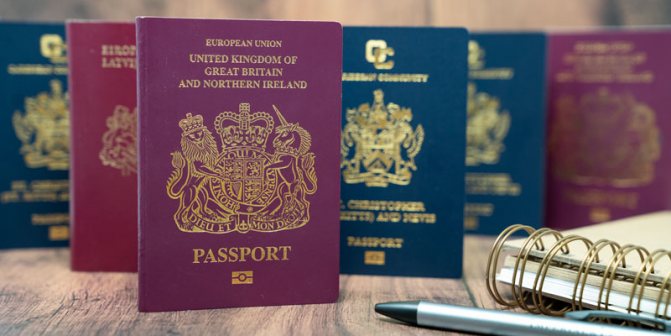
Malta
Moving to permanent residence in Malta is possible through investments: by purchasing government bonds or purchasing real estate. It is important that citizenship can be obtained by all family members, including parents and grandparents.
To obtain Maltese citizenship by investment, you do not need to speak the language or know the history of the country. But there is one important requirement: lifetime health insurance for all participants.
Latvia
Many who decide to emigrate from Russia consider Latvia for themselves. Here, the majority of the population speaks Russian, the standard of living is high, there are no environmental problems, housing prices are affordable, and the banking system is not as strict towards new clients as, say, the Swiss one.
To obtain Latvian permanent residence you must:
- live in the country with residence permit documents for five years;
- do not leave the country for more than a year;
- pass the Latvian language exam.
People with serious hearing, vision, and cerebral circulation impairments are exempt from the exam. The diagnosis must be confirmed by a rehabilitation doctor.
Permanent residence must be renewed every five years. Having this status, a foreign citizen cannot vote in elections or hold public office. However, if you wish, after 10 years of residence you can obtain Latvian citizenship and a European passport.
Montenegro
If you study at a local educational institution, open your own business providing work to local residents, or come to visit your spouse, then the immigration legislation of Montenegro requires the issuance of a residence permit. After five years you can obtain permanent residence status, and after another five years you can apply for Montenegrin citizenship.
Conditions for obtaining Montenegrin citizenship:
- fluency in the state language;
- confirmation of majority;
- documents confirming residence in the country for 10 years;
- documentary evidence of employment.
You can also obtain Montenegrin citizenship through investment - in this case, you will become the owner of a country’s passport within 6 months, and you will not have to take a language test.
Russian pensioners often consider Montenegro as a place to move for permanent residence. The moderate maritime climate, the absence of a language barrier, ease of obtaining a residence permit, good environmental conditions - all this makes this country attractive for older people.
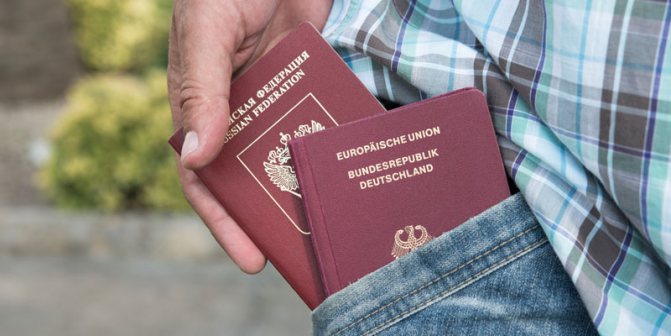
Caribbean citizenship
If you want to emigrate from Russia to some warm places, then you should also pay attention to the countries of the Caribbean - such as Saint Kitts and Nevis, Dominica, Antigua and Barbuda, Grenada and Saint Lucia, which offer citizenship at very favorable financial prices. conditions compared to European countries.
Passports from these countries have many advantages:
- low investment amount - from $100,000 in Saint Lucia and Dominica, from $150,000 in Saint Kitts and Nevis, as well as Grenada;
- the return period for invested funds is from three to five years;
- after three to six months the applicant becomes a full citizen of one of these countries;
- visa-free entry to more than 150 countries;
- loyal taxation, in some countries there is no tax on real estate and income received in other countries;
- dual citizenship, retained for life and inherited;
- A Caribbean passport can be used as the main one, open bank accounts with it, and obtain residence permits and permanent residence in other countries.
You can learn more about what permanent residence is and what you should pay attention to when looking for an option to move from our article “How to choose a country for moving to permanent residence? Options for Immigration."
Migration (mechanical movement) of the population of Russia
Migration is the movement of a population across a territory, usually associated with a change in place of residence.
The main reasons for migration are: economic, domestic, environmental, political, religious and military.
Migrations can be voluntary or forced . Internally displaced persons and refugees are sweeping our country and this is a huge problem. It is most acute for Ingushetia and other neighbors of the Chechen Republic, from where a stream of refugees poured in in the fall and winter of 1999-2000.
There are also internal and external migrations .
Internal migration is the movement of population within the country.
The main types of internal migration include:
- Migration from village to city or vice versa;
- Migration from one city to another;
- “Pendulum” migrations, characteristic of suburban areas of large cities;
- Seasonal migrations associated with seasonal work and recreation in the summer;
- Migration to “new development areas.”
|
| Figure 10. Migration growth rate by regions of Russia in 2005: 1 - Central Black Earth; 2 - Central region; 3 - North-Western region; 4 - Volga region; 5 - Ural; 6 - Volgo-Vyatsky district; 7 - North Caucasus; 8 — Russia as a whole; 9 - Western Siberia; 10 - Eastern Siberia; 11 - European North; 12 - Far East |
Until the 1990s, the population resettled from the populated European part of Russia to the undeveloped regions of the North, Siberia and the Far East, where, during the period of industrialization (1930s), industrial evacuation (1941-1943) and in the post-war period, construction of new cities and factories, development of the richest natural resources.
Since the beginning of the 1990s, for the first time in the history of the North, Siberia and the Far East, an outflow of population from these regions began (the only exceptions were the Yamalo-Nenets and Khanty-Mansi Autonomous Okrugs). A particularly strong flow of people leaving is typical for the Far East (about 1 million people left between 1990 and 2004), and the population of the Magadan Region and the Chukotka Autonomous Okrug has decreased by half.
The greatest migration growth over the past ten years has been observed in the Central Economic Region (almost 1.2 million people), where Moscow is still the main center of attraction for migrants, in the North Caucasus (about 1 million people) and in the Volga region (more than 800 thousand . Human). The largest relative population growth is observed in the Central Chernozem region, where more than 550 thousand people arrived, which led to an increase in the region's population by 7%. The North Caucasus is also characterized by intensive internal movements of the ethnically diverse mountain population to calmer Russian regions - the Stavropol and Krasnodar territories.
External migration is the movement of population outside the country.
Among external migrations, a distinction is made between emigration and immigration .
Emigration is the departure of the population from the country.
Immigration is the entry of people from another country.
Currently, the number of people entering Russia exceeds the number of people leaving its borders. This is due to the process of re-emigration (return) of Russians from the countries of the Near Abroad, especially from Kazakhstan, Central Asia and Transcaucasia, and the attraction of cheap labor.
The migration balance with the countries of the Far Abroad is dominated by emigration, especially to Germany, Israel and the USA. These countries account for more than 93% of all those leaving Russia (see Figure 11). Material from the site https://worldofschool.ru
Emigration in Russia clearly bears the features of the so-called “brain drain”: among those leaving the country, scientists, people with higher education, and prominent cultural and artistic figures predominate. Over the past ten to fifteen years, Russia has lost more than a third of its scientific and cultural potential.
|
| Figure 11. Distribution of those who emigrated from Russia by country for 1980-2005. |
On this page there is material on the following topics:
Mechanical population growth in Russia abstract
Russian population migration report
The main reasons for mechanical migration and population growth in Russia in 2014
Migration of the population of Russia report on geography
Geography 8th grade external migrations - to and from Russia
Questions about this material:
Describe the features of population migration in Russia.
The price of emigration from Russia: residence permit and citizenship by investment
The simplest, although not the cheapest, way to move to another country may be to obtain a residence permit (residence permit) by investment or citizenship by investment. Typically, authorities look positively at businessmen who want to invest their money in the economy of their state. Therefore, the conditions imposed on such applicants for immigration are as flexible as possible. The main thing is to provide evidence that the funds were obtained legally - money laundering is fought very seriously in most developed countries.
In addition to the residence permit or citizenship itself, an investor can receive good dividends and significantly increase his capital if he manages his investments correctly. It is important that in a number of states it is allowed to invest money not only in business, but also in real estate. That is, in fact, buying housing for yourself and your family in a new place can already become the basis for obtaining a long-term permit for permanent residence in the country. However, this is not possible everywhere, so you need to carefully study the legislation of the state in which you want to settle.
| A country | Attachment objects | Amount of investment | Conditions for obtaining citizenship by investment |
| Cyprus* | Residential and commercial real estate Government bonds Bank deposit | €2 200 000 | The investment object cannot be sold or transferred to other persons for 3 years |
| Austria | Business in the country with jobs for local residents | €10 000 000 | You can obtain citizenship in 2 years |
| Germany | Creation of a business with jobs for 5 German citizens | €250 000 | First, a residence permit is issued for 1 year, after 8 years you can obtain citizenship |
| Latvia | Immovable residential property | €250 000 | Registration of a Latvian residence permit for 5 years, after which it is possible to obtain permanent residence |
| Spain | Business development Acquisition of real estate | €500 000 | A residence permit is issued for 5 years, after 10 years of residence you can obtain citizenship |
| Malta | Buying a property Charitable donation Direct investments | €1 310 000 – €1 460 000 | The period for obtaining citizenship is 1-3 years. A Maltese passport allows you to live and work in any EU country |
| Slovakia | One of the country's priority economic sectors | €2 000 000 | Immediately after the investment, a residence permit is issued, and then a permanent residence permit. Dual citizenship is not allowed |
| Portugal | Buying a property Creation of 5 jobs for local residents | €350 000 | A residence permit is issued, after 5 years you can obtain permanent residence, after 6 years - citizenship |
| Great Britain | Investing in the local economy Creating a new business in the country Opening a representative office | from £2,000,000 from £50,000 No investment | Depending on the type of visa, permanent residence can be obtained in 2-5 years, citizenship in 5-6 years |
*The program is currently suspended
This option of immigration to another country for investment is also called a “golden visa”. This means that our compatriot can emigrate from Russia by investing a certain amount in the country’s economy and receiving the status of a resident and, in the future, a citizen.
The European “golden visa” gives the right to permanently reside in the EU country that issued it and to move freely throughout the European Union. However, in order to travel around the world without visas, you need to obtain citizenship of your new homeland and obtain a European passport.

Demographic results 2020: Russia returned to the 90s
The “natural” decline amounted to almost 700 thousand people
The demographic results for 2021, which were published by Rosstat, can be described in one word: disaster.
We predicted a large and ever-increasing population decline a year ago, but hardly anyone could have imagined that it would amount to almost 700 thousand people. Mortality
Mortality has received the most attention in 2021 due to the coronavirus. And it really grew very strongly - by 324 thousand, or 18%. This growth even exceeded that of 1993 and was the largest since the famine of 1947. Moreover, out of 324 thousand, only 104 thousand were caused by coronavirus as the main cause - only 32%. The remaining 68%, or 220 thousand deaths, are caused by other reasons. We have already written that there are no signs of underestimation of deaths from coronavirus. Therefore, 220 thousand additional deaths are likely due to the inadequacy of the authorities’ response to the coronavirus, since there were no other reasons for the sharp increase in mortality in the past year.
Rector of the Higher School of Organization and Management of Healthcare Doctor of Medical Sciences Guzel Ulumbekova, in an interview with Nakanune.RU, noted that at least half of the increase in mortality is due to the fact that medical care has become much more difficult to obtain under conditions of restrictions and disastrous cuts in healthcare. Chief Researcher of the Research Institute of Public Health and Healthcare Management of the Moscow Medical Academy named after. Sechenova Doctor of Medical Sciences Professor Igor Gundarov has repeatedly stated that the authorities are committing irrational acts, unjustifiably driving all coronavirus patients to urgently repurposed hospitals, where they become infected with many other infections. As a result, mortality in hospitals has increased many times over, and this is not explained solely by the coronavirus. But the structure of mortality by cause is not published, and there is still no data on how mortality by cause of death has changed in 2021. These data will not appear until the summer.
The bottom line is that the coronavirus, which plunged the country into crisis, caused only 32% of the huge increase in mortality and only 5% of all deaths. At the same time, the daily summary is reported only for this infection, as if there were no other diseases. All this has signs of manipulation designed to divert attention from the real demographic catastrophe.
By the way, life expectancy at birth has dropped dramatically, from 73.3 to 71 years or so. Exact data will be made public later. This drop was the largest since 1993.
Fertility
The forecast from a year ago turned out to be accurate. We wrote that “the most likely figure is 1.45 million.” And so it happened. 1 million 436 thousand children were born – 3.3% less than a year earlier. It's safe to say that almost all of the decline in 2021 was due to a decrease in the number of women of childbearing age. So for the first time the Government can reasonably refer to the reason they always mention. Last year, the total fertility rate (TFR), which was 1.50 children per woman, if it fell, it was to 1.49, no more. Because even if the TFR remains at the same level, the absolute number of births will fall by 2-3% every year - there are fewer and fewer young women.
Formally, the birth rate per woman in 2021 has almost stopped falling. However, what will happen in 2021? The economic crisis, declining incomes, rising unemployment, uncertainty about the future, uncertainty, an atmosphere of fear, daily pumping of negative news about the coronavirus - all this will lead to a further decline in the birth rate. There is no reason for its growth at all. According to an autumn survey by the NAFI Analytical Center, almost half of Russians of childbearing age do not want to have children at all. In the spring, RANEPA published similar data. Back in 2021, Rosstat recorded a significant degradation of reproductive attitudes compared to 2012. That is, Russians are increasingly choosing degeneration themselves, not wanting to resist circumstances.
Population decline
It has already reached 689 thousand people in a year, more than doubling last year’s already considerable figure of 316 thousand, and has become the highest since 2005. If we take the ratio of mortality to birth rates, it was almost 1.5 times compared to 1.21 a year earlier. In a number of regions of central Russia the excess was 2 times or more, and in the Tula region – 2.5! That is, 2.5 times more people died in a year than were born. Natural growth is observed only in national republics and autonomies. By the way, the absolute birth rate has become the lowest since 2002.
Migration
Due to bans and restrictions, migration growth has become the smallest in many years. In 11 months it amounted to 91 thousand, and in a year it will be about 100 thousand. Thus, the net population loss will reach almost 600 thousand - the maximum after 2003.
Deputy Prime Minister Tatyana Golikova named low migration growth as one of the reasons for the huge population decline, diverting attention from the catastrophically low birth rate and sharply increased mortality, and mainly not due to the coronavirus. One could ignore this “explanation” if it did not characterize the Government’s overall attitude to demography. It is very simple - do nothing, but only explain the causes of extinction. A very revealing question is: who in the Government actually deals with demography or even talks about demography? After the publication of yet another depressing data, Golikova or sometimes the Ministry of Labor make comments. That's all their “work”. The only person who talks about demography and even large families is the president. Sometimes he even gives assignments to support families with children, and that's good. But there is no demographic policy in the country. Everything is left to chance. Social support measures are social policy. Demographic policy should be aimed at improving demographic indicators, that is, the number of births and deaths, but it is not. And these goals are not even set. Russia has lost almost 700 thousand people to extinction, and no one in power has even scratched the surface. The government is concerned about something else: how to attract migrants for seasonal agricultural work. This news appeared the day after the publication of nightmarish demographic results. And this is very symbolic.
“What Ms. Golikova says about this is a separate phenomenon, showing not so much that the social bloc of the government is manipulating important statistics, but that it, in fact, no longer controls anything here. Chairman of the Supervisory Board of the Institute of Demography, Migration and Regional Development Yuri Krupnov told Free Press regarding Golikova’s explanations
Forecast
We will venture to make several specific demographic forecasts for 2021. The main question is: can things get better? Perhaps the mortality rate will decrease slightly, but it will certainly not return to its previous level. Probably 1.9-2 million people will die this year. Fertility will definitely fall further as it reflects reproductive behavior in 2021. At the end of the year, we expect 1.2-1.3 million births, that is, a strong decline in the total fertility rate. As a result, the “natural” population decline will be approximately the same huge amount - 700 thousand people.
Today we can state that in terms of fertility and mortality, Russia has almost returned to the 90s. Then the birth rate was also 1.2-1.4 million, the death rate exceeded 2 million, and the “natural” decline reached almost a million a year. But if then there was a large generation on the way born in the 80s, now no improvement is expected. Without the most drastic measures, the rapid extinction of Russia cannot be stopped. But there are no signs of this.
The 90s have begun in Russian demographics, which may never end.
nakanune.ru
TAGS: Demographic holeDemography of RussiaEvgeniy ChernyshevRussian newsExcess of mortality over birth rateBirth rate in RussiaRussiaMortality in RussiaSocial policy of RussiaSocial factorStandard of living in RussiaPopulation of Russia
Moving for permanent residence abroad with Imperial & Legal
Emigration from Russia is a responsible and difficult decision that requires serious preparation and competent execution of all necessary documents. Experienced lawyers from the British company Imperial & Legal are ready to advise you on all options for obtaining a residence permit and citizenship by investment. Our competent specialists will select an individual solution to suit your needs, help prepare an application and obtain a visa to the chosen country, and, if necessary, provide support when moving to a new homeland - from selecting real estate to opening a business or bank account.
#residence permit
#Citizenship
#European passport
#Immigration to UK
#Caribbean passport


